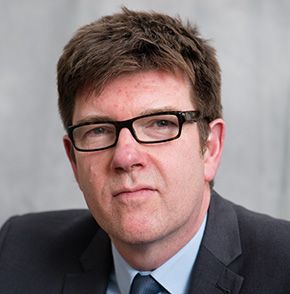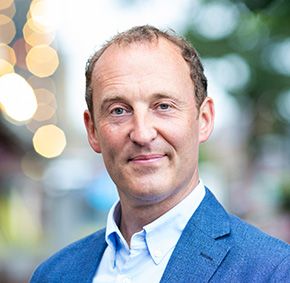Optimizing the Value of Real-World Evidence Projects
Mark Davies and Paul Riley describe their a blueprint for exploring how healthcare companies can leverage real world evidence to access and engage customers more effectively.
The not-so-simple challenge of brands and real-world evidence
Real-world evidence (RWE) is defined as “the clinical evidence regarding the usage and potential benefits or risks of a medical product derived from analysis of real-world data,” with real world data being “the data relating to patient health status and/or delivery of healthcare routinely collected from a variety of sources, including product and disease registries, patient-generated data including in home use settings, case studies and information collected from other health-related sources such as apps on mobile phones.”1
A review commissioned by the UK government highlighted that there are issues with the translation of research into clinical practice.2 The report identified two key gaps: firstly, outcomes of basic and clinical research do not always get developed into innovations with the potential to treat disease and illness in new ways (known as the first translational gap); and secondly, implementing those innovations into clinical practice can often fail (known as the second translational gap). The value of real-world evidence is to demonstrate the value of innovations when implemented in clinical practice, thereby closing the second translational gap.
Dr. Mark Davies

RWE helps us demonstrate all manner of aspects of a medicine that matter to stakeholders by providing an indication of the efficacy-effectiveness gap between randomized controlled trials (RCTs) and routine clinical settings. As an example, supportive RWE can be used to make a case to regulators for an improved side‑effect profile for a medicine, or it might be used to help prescribers choose the patients that are more likely to benefit from the medicine (particularly relevant given the rise in personalized medicine). RWE is also playing an increasingly prominent role in health technology appraisals, with large data pools and analytics providing insights into real‑world value that until recently have never been available. RWE is therefore not a substitute for RCTs but should be seen as complementary, each providing information the other cannot, with RWE demonstrating the wider value of medicines in a “real-world” clinical situation.
So, with all these apparent benefits, why do companies sometimes struggle to generate RWE? Well firstly there are technical challenges around ensuring RWE project design is to a sufficient standard with the correct level of expertise. Another challenge for RWE leads is accessing the required real-world data. Healthcare systems are often protective of their data and may pose various operational and legal barriers. On the other hand, creating a bespoke real-world database poses a number of logistics and cost barriers which may be compounded by local healthcare system policies around data sharing.
Dr. Paul Riley

While there are other potential constraints to developing an RWE project, one last but particularly important issue to address is internal stakeholder misalignment. In our experience these relate to two scenarios: 1] disagreement between regional/local teams and global teams about the potential impact of RWE projects on existing RCT data profiles (in that RWE may alter perceptions of the brand in a way that is not aligned with the original RCT evidence and product profile); and 2] disagreement between marketing and medical departments as to the best approach to collecting real world data, and the objectives linked to these projects. For example, the medical department is likely to view RWE projects as focusing on best practice identification (whether this is positive or negative in regard to the brand), whereas marketing will be focusing on RWE as a means of generating narrative around better positioning for the brand across different patient groups and service models. Both are legitimate positions but may create tensions internally.
Achieving RWE project success
Companies considering an investment in RWE generation should therefore consider three simple rules to be successful:
Ensure early internal consensus around RWE project value and leadership
Before an RWE project can commence there must be internal alignment between global/local and medical/marketing teams. Ideally stakeholders from each of these teams should form a single inception group to agree values and ownership. In practice, one or more of these teams are often “bolted on” to the project down the line and, not surprisingly, can find that their involvement should have been sought much earlier. At best it causes upset and a negative reaction, and at worst can mean the work that has been done by the initial group needs to be abandoned and the project restarted.
Ensure RWE projects are designed and delivered appropriately
Design of RWE projects is fundamental to ensure correct project team capability, leadership and design in the context of the wider evidence base for the brand(s). Mapping out the relationship between intended RWE modelling and existing RCT evidence in advance is crucial to ensure new analysis complements existing data models. This goes hand-in-hand with ensuring the project will deliver primary objectives through building the right internal/external capacity and capability, along with relevant and accessible data sources.
Drive RWE value integration with company and brand
RWE can have a positive impact for a medicine on many fronts: positioning on formulary, pricing negotiations, guideline inclusions, tender frameworks, payer engagement, population health modelling and general enhancement of the brand value proposition. But important to note for all such ”value targets” is that optimizing value from RWE projects relies on marketing and medical teams taking an integrated collaborative approach. Only then can RWE provide commercial leverage while reflecting best practice modelling, all packaged in a compliant way.
Beyond randomized controlled trials: Optimizing the value of real-world evidence projects
In summary, by following the three simple rules below, companies can optimize the value of real‑world evidence projects:
- Ensure early internal consensus around RWE project value and leadership
- Ensure RWE projects are designed and delivered appropriately
- Drive RWE value integration with company and brand
Dr. Mark Davies is an NHS Consultant and Director of Res Consortium. Dr. Paul Riley is Director of Glasshouse Health.
Notes
1. FDA, 2020. https://www.fda.gov/science-research/science-and-research-special-topics/real-world-evidence
2. Cooksey report 2006. https://assets.publishing.service.gov.uk/government/uploads/system/uploads/attachment_data/file/228984/0118404881.pdf
Addressing Disparities in Psoriasis Trials: Takeda's Strategies for Inclusivity in Clinical Research
April 14th 2025LaShell Robinson, Head of Global Feasibility and Trial Equity at Takeda, speaks about the company's strategies to engage patients in underrepresented populations in its phase III psoriasis trials.
The Misinformation Maze: Navigating Public Health in the Digital Age
March 11th 2025Jennifer Butler, chief commercial officer of Pleio, discusses misinformation's threat to public health, where patients are turning for trustworthy health information, the industry's pivot to peer-to-patient strategies to educate patients, and more.
Expanding Immune Response Testing to Support Vaccine Development
April 22nd 2025Nigel McCracken, chief operating officer, Virax Biolabs, discusses the expansion of its ViraxImmune platform into areas such as transplant monitoring, vaccine efficacy, latent virus reactivation, and CAR T cell therapy.